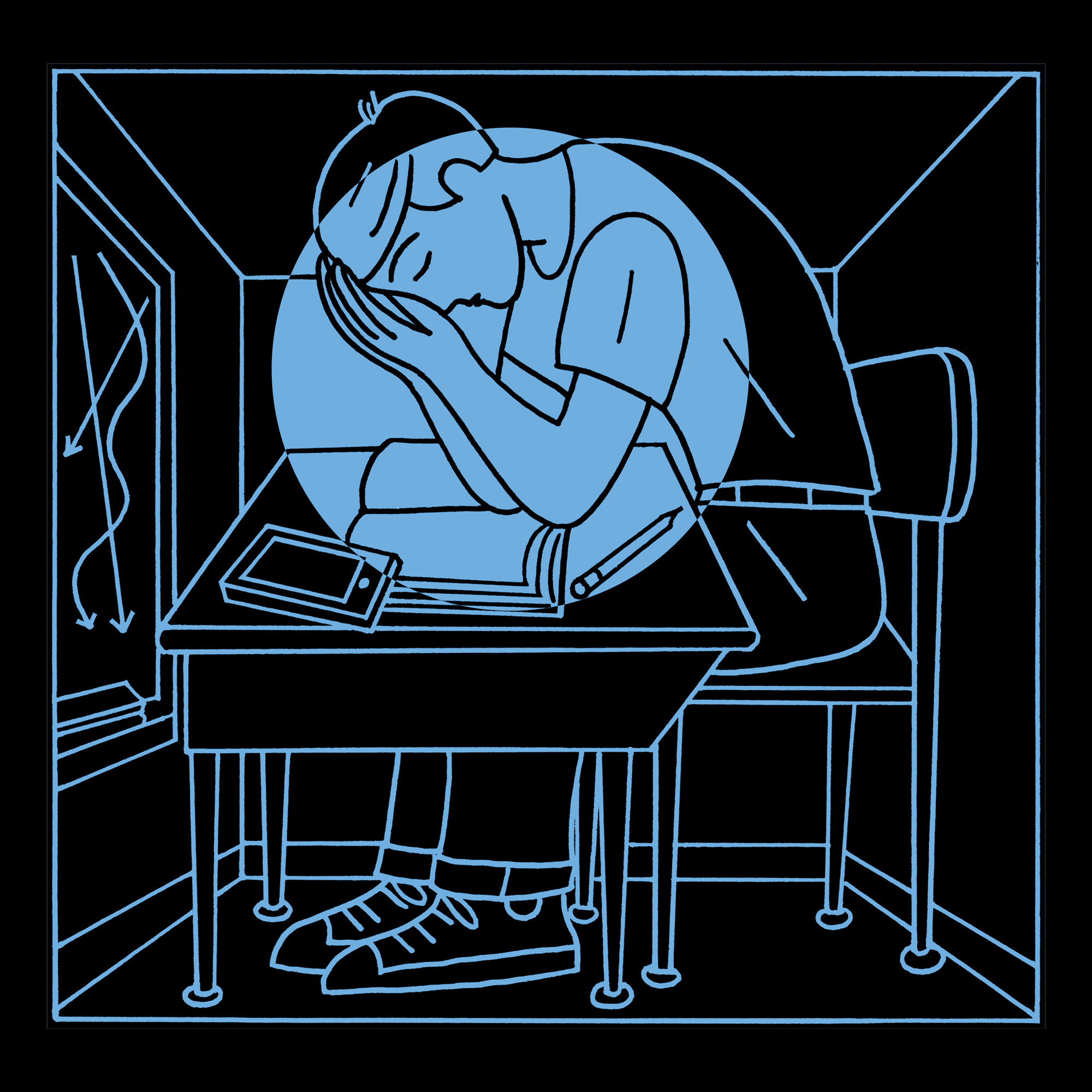Helping youth in crisis Helping youth in crisis Helping youth in crisis
Schools are on the front lines of the mental health crisis. They need trained social workers and the resources to help kids who are suffering.
By Jennifer Stuber and Eric Bruns | Illustration by Anthony Russo | March 2023

All across Washington state and the nation, our children and young people are feeling despair at levels never seen before. In 2021, 19% of eighth-grade students said they have seriously considered suicide in the last year, according to the Washington Healthy Youth Survey. This statistic is just a glimpse of the youth mental health crisis that was brewing before COVID and has now boiled over as students attempt to return to their in-person routines.
As parents of middle- and high-school-aged children and as mental health professionals, we experience this crisis in youth mental health every day when we respond to desperate appeals for help from other parents. As faculty in a research and training center focused on school-based mental health, we also experience this crisis as we respond to requests for help from schools across the state—schools that are weathering the anguish of multiple student deaths by suicide in a single year or the horror of one student shooting another student in their halls.
Although the crisis shows no signs of abating, there are indications of a proactive response. Schools are stepping further into their role in the prevention of mental health problems and suicide among their students. But they have so much to do already as they fulfill their educational mission. Schools need help if they are going to do more in the realm of youth mental health and suicide prevention.
One critical strategy is to invest in comprehensive youth mental health infrastructure in schools. Schools are where youth spend the majority of their waking hours and where they build relationships with trusted adults and friends. School staff can provide instruction on positive relationships and coping with difficult emotions. They can connect with young people and take notice when they are struggling.
Schools are also the most common venue for young people to find mental health treatment. Recognizing this, the 2022 Washington Legislature increased funding for school mental health professionals. These professionals are critical resources for students who are struggling, providing them with group and individual treatment while also helping teachers and staff implement a comprehensive mental health strategy for the whole school.
Despite recent and proposed funding increases, schools are still woefully under-resourced. Staffing ratios for school social workers in Washington (one for every 14,391 students) are at one-fiftieth the level recommended by the National Association for School Social Workers (one for every 250).
But who will fill these positions so essential to our young people’s well-being? We’re working on it. Inspired by the Ballmer Group-funded Behavioral Health Workforce Development Initiative developed by UW Social Work Dean Eddie Uehara and Associate Dean Ben DeHaan, the U.S. Department of Education recently awarded our state $6 million to create a pipeline from Washington’s five Master’s of Social Work training programs to Washington state schools. Through this pilot program, 100 aspiring social workers will receive conditional scholarships based on their financial need. These conditional scholarships oblige recipients to work in a high-need district for at least two years after graduation. They will have pre-service training, be placed at schools in internships to support their future leadership roles in schools after graduation and have opportunities for continued connection with students across the state with whom they trained.
These and other strategies provide hope that we can collectively respond to the crisis by investing in school-based mental health. Our project is just getting off the ground. If you’d like to know more, email us at uwsmart@uw.edu.